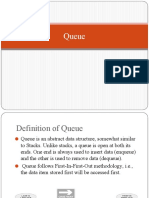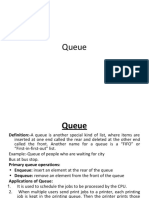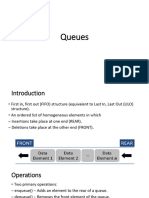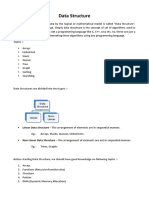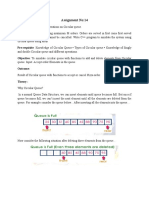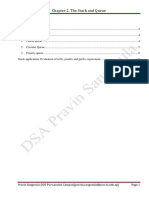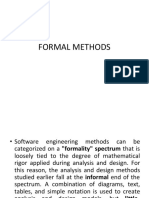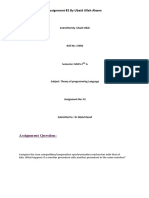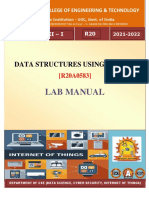0% found this document useful (0 votes)
3 views5 pagesSimple Queue Using Array
The document provides a C implementation of a simple queue using an array, detailing functions for enqueueing, dequeueing, and displaying the queue. It highlights significant drawbacks of a linear queue, including memory wastage, limited size, and inefficiency in reusing space. The document suggests using a circular queue as a solution to these limitations, allowing for efficient space utilization and maintaining O(1) time complexity for operations.
Uploaded by
questandlearn001Copyright
© © All Rights Reserved
We take content rights seriously. If you suspect this is your content, claim it here.
Available Formats
Download as DOCX, PDF, TXT or read online on Scribd
0% found this document useful (0 votes)
3 views5 pagesSimple Queue Using Array
The document provides a C implementation of a simple queue using an array, detailing functions for enqueueing, dequeueing, and displaying the queue. It highlights significant drawbacks of a linear queue, including memory wastage, limited size, and inefficiency in reusing space. The document suggests using a circular queue as a solution to these limitations, allowing for efficient space utilization and maintaining O(1) time complexity for operations.
Uploaded by
questandlearn001Copyright
© © All Rights Reserved
We take content rights seriously. If you suspect this is your content, claim it here.
Available Formats
Download as DOCX, PDF, TXT or read online on Scribd
/ 5
































